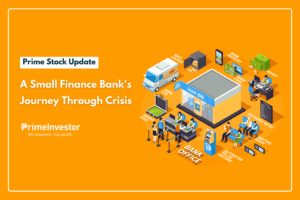Many of you wish to build your own MF portfolio by modifying our ready-to-use portfolios. Our portfolios work for various time frames and goals and for SIPs and lump sums. We have also built the portfolio size (number of funds in the portfolio) to keep it reasonably diversified – providing style mix as well as reducing single fund/fund house concentration.
However, if you have a very high SIP running (Say Rs 2 lakh per month) or a large lumpsum (say few crores) then it is natural that you may need to diversify a bit with more funds or more investing styles. Or you might want to add more flavour with some international fund or gold or even a hybrid fund. How should you go about doing this?

Let us take one of our more popular portfolios – the 5-7-year timeframe-based portfolio to illustrate how we go about building our portfolios and what you can do if you wish to customize it further. We will do a series, periodically, to explain the construct of our other portfolios as well.
In our 5-7-year timeframe-based portfolio you will see that we have a 5-fund portfolio with 65% allocation to equity and 35% allocation to debt. Pretty much what an equity-oriented balanced fund allocation is – except that you have a mix of investing styles within this!
You will see 5 funds in the portfolio –
- a multi-cap fund
- a large and midcap fund
- a midcap fund
- a short-term debt fund
- And a corporate bond fund
Mixing styles to build your MF portfolio
For this purpose, our explanation on ‘why this combination’ in each of our portfolios will clearly explain why and how we combined multiple funds from across categories and asset classes. Once you get a grip of the proportion of equity and debt we use and the mix of categories, it is only a matter of replicating it while you build your own portfolio.
Now, the important point you need to note here is that we did not simply choose funds from a few categories and put them together. Rather, we have tried to mix investing styles in equity and reduce interest rate cycle related risk in debt. Let us take each fund and its characteristics.
Multi-cap fund: We haven’t chosen this simply because we want representation from the multi-cap category. This is a fund with a large-cap bias and has a value conscious strategy (not a value fund per se). We did not see merit in having a separate large-cap fund here and chose to use the multi-cap strategy with a value tilt. Why not a pure value fund? We did not want to give a pure value fund for periods of less than 7-10 years as we have seen value underperform for prolonged periods. Hence, we choose a fund that will not hold overbought stocks and yet adequately play the growth story at reasonable price.
Large & midcap fund: While large & midcap funds are usually known to be aggressive with growth tilt, we chose one with a mix of growth and value to provide consistency than chart topping returns. It also helps add returns to a long-term portfolio without going overboard on midcaps.
Midcap fund: The midcap fund we chose was also with an intention of containing downsides better than peers. Why are we so cautious of this even in a 5-7-year portfolio? Simply because we have seen past periods of poor returns even over 5-year periods (please note that when we say this, we have backed this with data in multiple forums and in our research methodology). The best you can do for such time frames is to therefore keep volatility at check.
Short-term debt fund and corporate bond fund: The 2 debt funds have a blend of short and medium duration and thus would work in both interest rate falls (where the corporate bond would outperform) and rate hikes (where the short-term high-quality fund would make up with more accrual income).
Now, if you wish to largely keep the risk profile intact but diversify your funds how to go about doing it, if it is really needed? Let us address it.
Adding more funds within a category
You can always modify a portfolio to suit your need or style. But they will no longer be in the same style or mix or risk profile that we gave. If you wish to add more funds to a given portfolio (within same Prime category) without impacting its risk profile, consider the following:
While adding funds, go through the ‘Why this fund’ column that appears for every fund in our Prime Funds list. This is mighty useful as it will let you know whether you are picking funds that are slightly varied in style to the ones that are already there in our portfolio.
- Look at keeping the asset allocation intact as far as possible as the idea is to give you a desired level of risk for the given time frame. If you change the asset allocation, remember the risk profile of this portfolio changes and hence it may not be easy to mimic our changes later. Our premium Portfolio design webinar presentation has an exclusive slide on what asset allocation is suitable for different time frames. It gives you broad indicators (and not advice) to build your portfolio.
- Pick funds from similar Prime categories in our Prime Funds, if you wish to add funds but keeping your debt-equity allocation intact. For example, to supplement our multi-cap choice, pick any other fund from our Equity – moderate category or even a large-cap index fund from our passive category. If you wish to supplement the large & midcap fund, add the ones from our Equity-aggressive category, which are not pure mid and small cap funds.
- You can do a similar exercise with debt funds too. If you wish to go beyond the same categories we have, then consider those with lower duration. Avoid upping the duration (by adding dynamic bond or long-term funds) as it will change the risk profile. In other words, pick similar or lower duration Prime categories to add more debt.
- While adding funds, go through the ‘Why this fund’ column that appears for EVERY FUND in our Prime Funds list. This is mighty useful as it will let you know whether you are picking funds that are slightly varied in style to the ones that are already there in our portfolio. Aim at keeping a mix of styles in your portfolio and avoid chasing after a particular style because its 1/3/5 year returns look great. For example, while the multi-cap fund we have chosen is clearly stated as having a bit of value tilt, going with an index fund or a growth-oriented multi-cap or large cap fund may give you more growth and complement the peer from same category. Many of you do not read this important piece of explanation and therefore feel handicapped. We would urge you to regularly read them when you choose funds to compare.
This exercise will help you achieve:
- Add more funds if you wish to, without asking us 😊
- Incidentally, reduce the single fund/fund house concentration further
Related Tip: If you wish to know about how many funds you should hold in a portfolio, read our article ‘how many funds should I invest in?’
Adding more categories to a portfolio
Whether you should add more categories or not for a given portfolio depends on what categories you wish to add and whether you should add those for a given time frame or risk profile. The 2 articles below explain how to use different categories of funds in your portfolios. Decide the categories you want to add based on your need, while keeping in line with the guidelines above – i.e., keep within lines of asset allocation, mix fund styles, and number of funds.
Let us tackle more of the category related questions with a simple FAQ here.
#1 Can I add gold or international fund to any portfolio?
Yes, you can but ideally do this only for 5-year plus portfolios. You cannot add a category that is unsuitable for your time frame or risk profile. So, it is not advisable to add gold nor an international fund for a 2-year time frame portfolio as these categories need longer time frame by design.
- If you wish to add say an international fund to a say 5-7 year or longer portfolio, make sure you treat it as part of your ‘equity allocation’. You cannot add it in addition to your equity funds.
- If you wish to add gold to your portfolio, reshuffle based on how much equity you have in your portfolio. For example, if you have 75% or more equity in your portfolio, then consider reducing equity to add about 10% gold. If your equity allocation is less than that, then reduce equity and debt a bit and bring in gold. This is for 2 reasons: one, gold is a hedge for equity and therefore you can substitute it for debt. However, gold swings as much as equity and therefore you cannot reduce debt too much. So, for example, in our 65:35 equity: debt portfolio, if you wish to hold 10% gold, reduce equity and debt to 60% and 30% respectively and introduce gold.
#2 Can I add a hybrid fund?
Unless you are adept at portfolio construction, we would recommend DIY investors to not venture into adding complex hybrid categories. They make your portfolio complex for 3 reasons:
- One, you need to know the equity: debt split in the hybrid fund to achieve your overall allocation. Rebalancing also gets tougher. And remember that hybrid funds change their allocations depending on the equity and debt markets.
- Two, most hybrid funds do not have any specific style for the equity or debt portions. You simply take what they give.
- Three, hybrid funds do not adequately give you the desired proportion of asset class on most occasions. For example: a 25% allocation to a hybrid aggressive fund gives you a maximum of 8.75% debt. This is true of multi-asset allocation funds too (where you may think you get gold). Unless you do this calculation properly, most portfolios built on hybrid funds turn out to be aggressive with poor downside protection.
If you are wondering how you should use hybrid funds at all, you will find them in our article here. You need to remember that they are best used to achieve tax efficiency or where you cannot hold too many funds. Do not take this to mean that you need to exit your hybrid funds. You just need to take cognizance of the complexities we mentioned for your future use.
#3 Can I add a short-term debt fund to a long-term portfolio?
As mentioned in our section of adding more funds, you can always add lower duration funds for diversification. In debt, reducing AMC concentration is good, even if it means duplication. But when you do that, you cannot up your risk profile by adding more volatile categories. Hence, it is good to add short-term debt to even long-term portfolios.
#4 Can I add a thematic fund to a given portfolio?
If you are not an aggressive investor you should entirely stay away from thematic or sector funds. Otherwise, you can invest provided you know that it will significantly up your portfolio risk profile. Keeping them to 5-10% overall will keep risks in check. Consider sector funds as part of your equity allocation, and within this as part of your aggressive allocation along with mid-cap/small-cap based funds. Here again, do not add such funds in short-term portfolios. And do not shy away from exiting them whenever you do portfolio rebalancing and realise that equity needs to be reduced.
#5 Why aren’t you adding gold, theme funds or international funds in most of your portfolios?
We seek to build portfolios that will be of use to a wider audience. Some may not prefer gold as they would have it in other forms. In other cases, some of our portfolios may have international equities through certain local funds. With sector/thematic investing, since it calls for tactical entries, we cannot add it as part of portfolios that are built to be invested in at any time. Hence, we selectively have them in Prime Funds alone. If you have theme you wish to invest in and want funds for it, we also have an option called Theme Park where we list funds that best fit the theme of your choice.
Please note that we will not be tracking portfolios that you customize for yourself. But as long as you follow simple rules of rebalancing and using our MF Review tool, you should be able to maintain your portfolio quite well.
Related Article : How to build a stock portfolio






9 thoughts on “How to build your own MF portfolio from our ready-to-use portfolios”
There is maximum time frame 7 years+ portfolio. Some of us have longer time frames to goals, say 12 years or even 20 years. In those cases if we take 7 years+ portfolio the required SIP amount is very less. But most fund houses have minimum SIP of Rs. 1000; So ultimately we may need to drop some funds. You mentioned adding new funds; what is the startegy if we need to drop some funds from readymade portfolios?
How do we build a passive portfolio for a period of 5 or more years
Chck out our ‘passive investing’ portfolios. Reduce equity in it based on your risk appetite and time frame. https://www.primeinvestor.in/portfolios-odds-and-ends/
Thanks for this wonderful posts
Thank you!
Hi,
Can you please let me know/email me the recommended funds that you suggest for this portfolio?
I understand that this would be part of your recommended list. However, a refresher always helps. Thanks.
We took the 5-7 year portfolio as an illustration as mentioned there. You can login and check the time-frame based portfolio. thanks, Vidya
One basic doubt, If a person got the duration of the goals which is greater than 10 years from today, Should we pick 5-7 or 7+ years goal portfolio .
The time frames mentioned are always minimum. You can use any portfolio based on your risk appetite as long as you hold it for the min time frame. Vidya
Comments are closed.